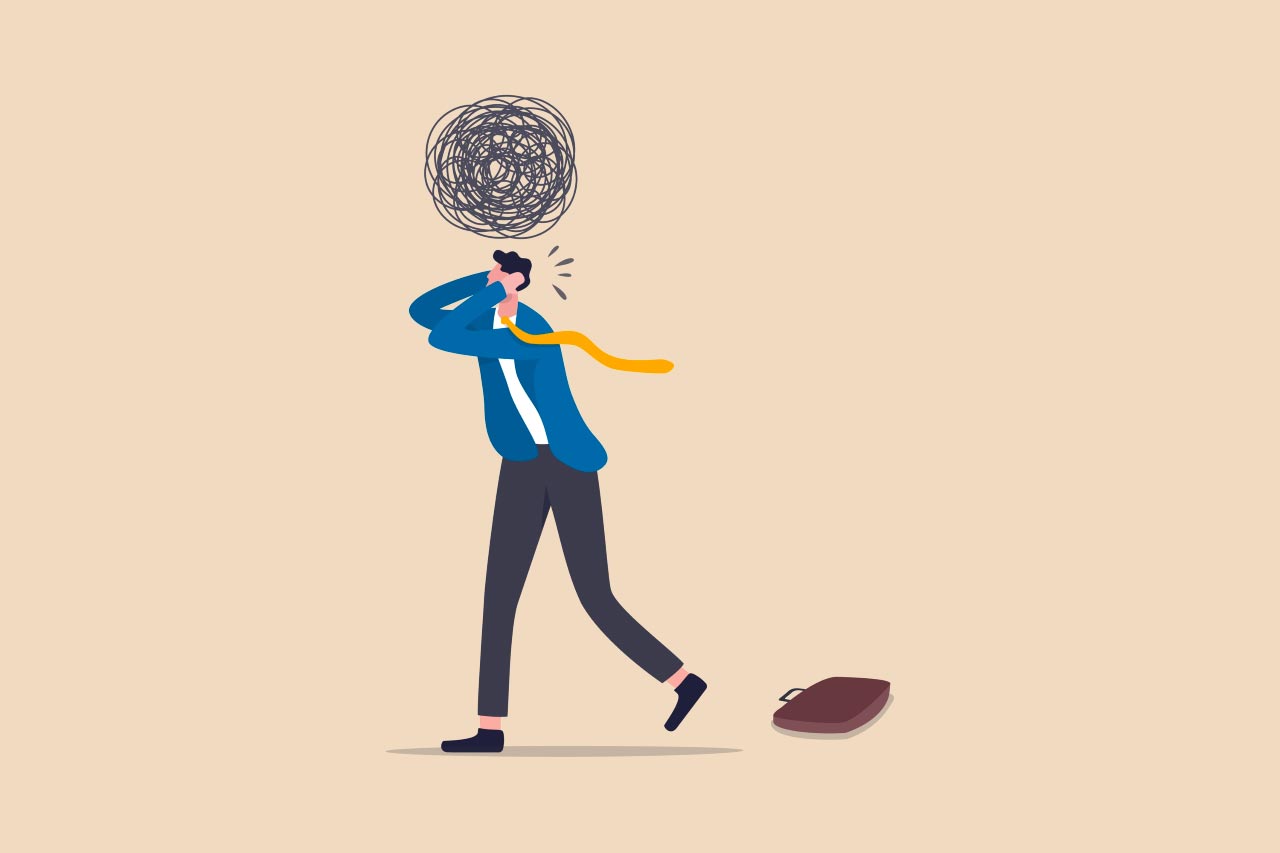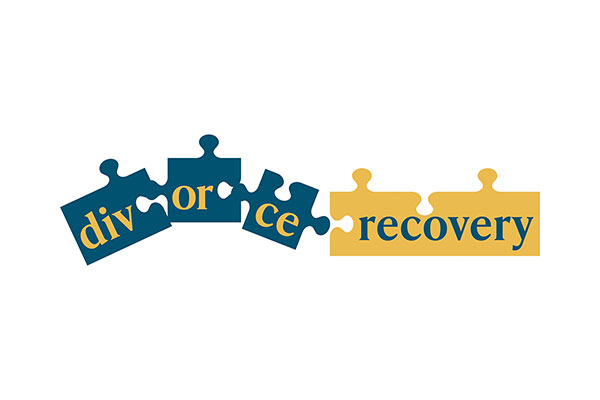When you hear the word “anxiety” most people almost immediately think of “stress.” While not totally wrong, this pairing is also incomplete. Unlike stress, anxiety disorders do not need to be based in reality or on some objective level of stress. Anyone can understand why someone might be stressed, but it’s not always easy to connect the dots when it comes to anxiety.
Anxiety’s job is to alert us to threats upon our well-being and our fear systems are activated based on our individual perception to that threat, not on the objective stress of the situation. This looks very different for each person, we all come with a unique set of genetic and a unique personal history. Therapists understand this and are good at empathizing and collaborating with those suffering from anxiety.
We also forget that anxiety is our friend. Without it, we would be in trouble. We would not have any emotional valence for risk. We wouldn’t have “gut feelings” about danger, how fast to drive, or feel the pressure to study for a big exam. If we could somehow mute the amygdala (fear center of the brain) I imagine it wouldn’t take long for our lives to be really upside down.
On the other hand, the opposite is equally as large a problem. Too much anxiety for too long can lead to really debilitated life. Cortisol, the body’s primary stress hormone, goes pumping through your system in endless supply, wreaking havoc on your central nervous system causing issues like IBS or mirroring heart or neurological disorders. Cortisol even shortens the Telomere’s that cap our chromosomes, weathering them over time even shortens our actually biological age and exposes people to early illness. Anxiety is necessary and important emotion with a deep biological system involving some of the most primitive parts of our brain. Learning to work with it and through it is a critical skill in developing a happy, healthy, and successful life.
Research shows nearly early one-third of people will experience an anxiety disorder in their lifetime with first episodes frequently diagnosed in adolescence. In reading this post our hope is that you will be able to understand how one develops an anxiety disorder, to identify subtypes of anxiety, symptoms of anxiety, and the most common therapeutic methods to reduce anxiety and manage stress. You should also be able to roughly identify which anxiety disorder fits the symptoms you are experiencing and understand more about how a psychologist or other mental health professional can help.
Anxiety Disorders: Causes and Symptoms
The causes of anxiety disorders lie in the complex relationship between nature and nurture. We have genes that can be turned on and turned off operating as predispositions activated or kept mute by our environments. For example, you may have a family history of people who are anxiety prone (a complex genetic coding not fully understood yet). This creates a personal genetic vulnerabilityVulnerability refers to the willingness to expose one’s feelings, thoughts, and experiences in a g… in developing an anxiety disorder yourself, but it isn’t a certainty. Life events, social and environmental, can “activate” this dormant condition and bring it out full force. Typical environmental factors associated with anxiety disorders include: Childhood instability or traumaTrauma refers to the emotional and psychological response to a deeply distressing or disturbing even…, abrupt endings without closureClosure refers to the process of concluding a group therapy session or program, allowing members to … on conclusion, sudden loss in childhood, or parental over-involvement. This is absolutely not an exhaustive list here.
The field is still working out just what factors contribute to the onset of an anxiety disorder, but we know more about the brain now than ever. If you see yourself in some of the criteria described next, don’t panic. Anxiety disorders are highly amenable to psychotherapy, so there is help out there and a way to get past your struggle with anxiety. This page will provide valuable information and hopefully inspire you to start your own therapy.
Major Types of Anxiety Disorders (DSM-5)
Social Anxiety Disorder
We are all familiar with the jitters that come with being in social situations. However, those with Social Anxiety Disorder experience intense fear to an overwhelming degree whenever in any social situation or even at the prospect of having to be social in the future.
They describe being paralyzed by a preoccupation of possible scrutiny or judgement by others and experiencing intense anxiety about being in conversations or meeting unfamiliar people. I have had a few people describe it as, “trying to monitor everyone’s experience of me when I am with them in a group, it’s just too much.” Even when the social situation is over, they will spend an inordinate amount of time analyzing their words and actions and feeling shame or embarrassment about minor hiccups in conversation.
Those with social anxiety disorder have intense fear about being observed or worse, having to perform in some capacity around other people (for most with social anxiety disorder, this would almost an unthinkable task). It is estimated that about 7% of the population struggles with this condition, although it trends downwards with age. Apart from the main issue described above, additional symptoms include:
- Shyness or being withdrawn from social activities
- Blushing
- Sweating
- Experiencing difficulty opening up to others or sharing only surface/small details about oneself
- Poor eye contact or on the other side, staring
- Trembling or shaking
- Stuttering or stumbling over words
- In children this may look like clinginess, being socially mute, tantrums, or withdrawn behaviors
Panic Disorder
A Panic AttackA panic attack is a sudden episode of intense fear or discomfort, often accompanied by physical symp… is a sudden episode of intense fear or anxiety with accompanying physical and psychological symptoms. Episodes are triggered by a perceived threat (internal or external) rather than imminent danger. Accompanying symptoms include feelings of losing control, “going crazy”, heart palpitations, chest pain, or feeling like you may pass out.
Panic attacks and anxiety attacks differ in that panic suddenly appears while anxiety attacks build over hours or days. Panic attacks come on suddenly and usually subside over a few minutes, while anxiety attacks are more like peak episodes of anxiety within an already distressed state. The diagnosis of Panic Disorder comes about when the focus of one’s anxiety is avoiding future attacks. The average age of onset is during teenage years. Teenage anxiety and panic attacks tend to be more severe than other age groups.
Below is a list of the common symptoms of a panic attack:
- Rapid or pounding heartbeat, or heart palpitations
- Sweating, shaking, trebling
- Chest pain, concerns about the heart or having a heart attack, health-based concerns
- Shortness of Breath
- Stomach distress (IBS, etc.)
- Dizziness or feeling lightheaded
- Fear of dying, going crazy, or losing control
- Experiencing a sense of impending doom
- Feeling detached or disconnected from reality
The episodes come on quick and typically only last a few minutes. Panic attacks are not actually dangerous although they totally feel like it. If you have had a panic attack before, it does not mean you have panic disorderPanic Disorder involves recurring panic attacks, which are sudden episodes of intense fear accompani…. Panic Disorder is diagnosed when there is constant concern about having another one, chronic avoidanceAvoidance refers to the efforts made by individuals with PTSD to evade reminders of the traumatic ev…, and the fear of the anxiety precipitates panic attacks. If panic is left untreated for too long, many find that they start to become agoraphobic. It is important to address panic disorder as early as possible.
Agoraphobia
AgoraphobiaAgoraphobia is the fear of being in situations where escape might be difficult or help unavailable i… in Latin means “a fear of the marketplace.” Those with agoraphobia feel intense anxiety or even experience panic attacks when exposed to big open spaces. This condition is characterized by an intense anxiety about at least two of the following:
- Using public transportation
- Being in open spaces (parking lots, outdoor facilities or shopping centers, bridges)
- Being in enclosed spaces (shops, theaters, cinemas)
- Standing in line or being in a crowd
- Being outside of the home in general
There is frequently marked avoidance of these situations and people begin to feel anxious when even considering visiting one of the above. The typical reason for the anxiety is that the person believes it might be difficult to escape or that help won’t be available if they begin to panic. To be diagnosed the fear must be consistent in at least 2 of the areas described above.
Separation Anxiety Disorder
While some anxiety about being separated from someone you are close with is normal, Separation Anxiety DisorderSeparation Anxiety Disorder is characterized by excessive fear or anxiety about being apart from lov… is diagnosed when that fear becomes debilitating. Those with this issue experience excessive concern, worry, and dread about anticipated or actual separation from a loved one. Separation anxiety disorder is more common in children but is often diagnosed in adults too. A list of the common symptoms includes:
- Recurrent and excessive distress when anticipating or experiencing separation from home or a major attachment figure
- Persistent and excessive worry about losing major attachment figures or about possible harm to them, such as illness, injury, disasters or death
- Preoccupations with events that could cause separation from a loved one (e.g. being lost, kidnapped, an accident, becoming ill)
- Reluctance to go out, away from home, to school, work or elsewhere because of fears about separation
- Fears of being alone
- Trouble sleeping away from home without the loved one
- Nightmares about separation
- Complaints of physical symptoms when separated (e.g. stomach aches, headaches, nausea)
Generalized Anxiety Disorder (GAD)
GAD is one of the most common and most debilitating anxiety disorders in the US. It also has the lowest recovery rate of any of the anxiety disorders. It appears to be deeply imbedded into one’s personality system and patterns. Psychoanalytic practitioners and researchers have even thought of re-conceptualizing it as a distinct personality disorder in and of itself rather than an anxiety subtype. What GAD looks and feels like is obsessive worry.
Generalized Anxiety Disorder is a subtype of anxiety that describes those who find themselves living in a chronic state of worry and anxiety. The symptoms worry and anxiety are severe, pick up in teen years, and without proper anxiety treatment tend to be chronic. The worried thought patterns of those with GAD move from concern to concern from finances, to health, school or work performance, family, the future, the past, relationships, etc.). Those with GAD spend little of their mental life in a care-free state. They are typically burdened by an always changing sense of threat, concern, or worry. Most often, the concern is largely out of proportion to the actual threat or far more than the situation calls for and it obvious to those around them. Additionally, those with Generalized Anxiety Disorder feel that their worry is reflexive, obsessive, and largely out of their control. It is frequently diagnosed with other disorders such as depression, substance use, PTSD, and OCD. There are a host of consequences on the mind and body from living in in a chronically keyed-up state. These include:
Physiological Symptoms:
- Restless, feeling keyed up, or on edge
- Feeling easily fatigued
- Muscle tension, aches, or soreness
- Sweating
- Accelerated heart rate, shortness of breath, or dizziness
- Stomach issues (nausea, diarrhea, IBS)
- Trembling, twitching, feeling shaky
- Sleep disturbancesSleep Disturbances are common in individuals with PTSD, often manifesting as insomnia, nightmares, o…, including difficulty falling or staying asleep, or not feeling well rested
Cognitive Symptoms:
- Excessive anxiety or worry (apprehensive expectation) occurring more days than not for at least 6 months
- Difficulty controlling the worry
- A sense of impending danger, panic, doom
- Irritability
- Difficulties concentrating
- Difficulties with memory
Many do recover from GAD, but it takes some time and energy in psychotherapy to get there. Adjustments in personality style, reflexive coping, and underlying traumatic stress symptoms are often the target of psychotherapy. A subset of people with GAD describes childhood environments characterized by over-sheltering and dependence, a parenting style that is well meaning but ultimately leads to a teen or young adult who hasn’t built up effective coping or enough psychological resilienceResilience is the ability to adapt and recover from adversity and trauma. Building resilience is ess…. Our group specializes in treating GAD. We have helped a ton of people make the changes necessary to live an anxiety and worry-free life.
If you want to explore more about how GAD differs from other disorders and gets some ideas about how to work with the issue at home and in therapy, please visit a previous post titled Anxiety Treatment for Anxiety and Panic Attacks. Our practice is particularly skilled at treating GAD.
Obsessive Compulsive Disorder (OCD)
Only recently, OCD has been moved from the anxiety disorders section of Diagnostic and Statistical Manual to its own separate category. However, we believe it is still useful to conceptualize OCD as an anxiety disorder, primarily because anxiety is the underlying factor that drives the obsessions and compulsions people engage in to find relief.
Imagine packing your car, headed to the airport for vacation, and just before you leave your community you realize you didn’t lock the front door. Feel that moment for a second. Now imagine you go back, lock the door, and do it haphazardly, get to the edge of the community and think again – “damn, I’m not sure I turned the key all the way over” and just to be sure and have peace of mind, you go back and lock it fully once more. I think most people could picture this scenario. Now, for the OCD person, this thought and the conviction that something wasn’t totally completed persists, and persists, and persists. Each return to the door serving to alleviate more anxiety, while also reinforcing the compulsive checking behavior. This example attempts to highlight both the issue and the experience of someone suffering from OCD. As you can imagine, it takes a toll on one’s well-being, relationships, and commitments.
OCD is characterized by unwanted, recurrent and persistent thoughts, urges, and images that cause significant anxiety and distress. In response to the intrusive thoughtsIntrusive Thoughts are unwanted and distressing memories or ideas related to the traumatic event tha… the person typically attempts to either suppress them or neutralize them with some other thought or behavior (the compulsion). A common misconception is that the behavior (e.g. handwashing, praying, repeating words silently, checking the stove, checking to see if the car is locked, etc.) is the primary issue. Rather, it is the underlying anxiety that needs work. This is where depth-oriented, psychodynamic therapy comes in. OCD is typically driven unconsciously and the original anxiety has roots or a symbolic relationship to other, more primitive, historical issues in one’s life. Cognitive Behavioral therapyBehavioral Therapy is a therapeutic approach that focuses on modifying specific behaviors associated… then aims to break-up the chain of thoughts, feelings, and behaviors that have grabbed hold of your neural wiring. This utilization of these primary techniques is tremendously effective.
One last note, compulsions can be both external behaviors or mental behaviors. For example, thought OCD would be something like undoing an anxious thought with prayer, repeating certain phrases silently in the mind, mental counting, needing to operate on even numbers, etc. The compulsions serve to neutralize the anxiety and are often used rigidly, constantly, and inflexibly. They are aimed at preventing growing anxiety, some dreaded outcome, or distress. The point though, is that these compulsive behaviors or mental acts are not connected in a realistic way with what they are designed to neutralize or prevent, or are clearly excessive.
Most with OCD cannot, even for an instance, hold back from engaging in the compulsive behavior. The DSM states that in order to be diagnosed one must meet one of the following three criteria: engaging in these compulsions for at least an hour per, that is creates excessive fear or anxiety, and is interfering with life functioning.
Management and Treatment of an Anxiety Disorder
Thankfully, Anxiety Disorders are absolutely treatable. In fact, the vast majority of people are able to either get to a place where they are not diagnosable or manage it so well that it isn’t an issue anymore. Anxiety is a multi-determined problem and therapy needs to cast a wide net, at least in the beginning, to target anxiety treatment effectively.
At Keil Psych Group we use a combination of Psychodynamic (to get at the roots of the anxiety), Cognitive Behavioral Therapy or CBT (to understand, target and intervene with regards to underlying thought patterns), AcceptanceAcceptance in CBT involves acknowledging difficult thoughts or emotions without trying to change or … and Commitment Therapy or ACT (to identify underlying values systems, self-acceptanceSelf-Acceptance is the recognition and appreciation of oneself without the need for perfection. This…, engage flexibility, and provide thorough mindfulness skillsMindfulness Skills in DBT involve being present in the moment and observing thoughts and feelings wi…) as well as Interpersonal Psychotherapy or IPT (to address the relational and emotional elements of ones OCD). For certain patients, when they are ready, methods like Exposure and Response PreventionResponse prevention is used in CBT to stop individuals from engaging in compulsive or avoidance beha… and also beneficial.
For some people, anxiety is a defensive, or protective emotion and masks other, more threatening feelings. Those with chaotic childhoods or who grew in an environment of emotional neglect find themselves unconsciously afraid of various feelings, most typically sadness, anger, or shame. In those cases, we tend to use a more Emotion-Focused and psychodynamic approach. A theory called Emotion-Focused Therapy or EFT can be highly impactful for this subtype of anxiety disorders.
Embedded within all of our styles includes a backbone of mindfulnessMindfulness in CBT involves focusing on the present moment without judgment. It helps individuals be… and holistic care. Enough can’t be said here about the importance of integrating mindfulness and meditative techniques into one’s life if you are struggling with anxiety. It is the broccoli of mental health. All treatment approaches tend to reframe and repackage this foundational element into the core of the work. In searching for a therapist for anxiety, it is unlikely that you will find any psychologist who doesn’t approach treatment with some element of mindfulness. We highly recommend you look into mindfulness skills for anxiety before starting treatment. We regularly teach our patients particularly effective ways to utilize it to reduce symptoms and manage episodes. This is another area of specialization here at Keil Psych Group. In fact, Dr. Keil wrote his dissertation on mindfulness!
One last thought here and a word of caution. We find that psychologists who use a one-size-fits-all approach or are married to a particular style of therapy tend to have poorer outcomes. In our group, we spend time getting to know you and tailoring an approach that fits you as a unique person, relying on several different evidence-based models of psychotherapy described above. As you search for a therapist, make sure to have an ear for whether they are going to plug you into their existing treatment plan or meet you as a whole person. A bedrock value of this practice is to keep our style empathic, open, and collaborative. We start with where you are comfortable, we listen to you, and guide our therapy accordingly.
Medications for Anxiety Disorders
Although medications are not typically a first line if intervention, sometimes they may be necessary and helpful to allow therapy to have its full impact. Managing anxiety often starts with therapy, sometimes simple comforts like wearing a custom t-shirt can help reduce stress and create a sense of calm, allowing you to focus more fully on the therapeutic process. We don’t encourage patients to start here and take seriously the cost-benefit and potential side effects of beginning psychiatric medications. As a rule of thumb, anti-anxiety specific medications are discouraged, they tend to make things worse over time and there are much better options out there, specifically for issues like OCD and co-morbid depression.
Our team is highly educated with regards to medication protocols. We only work with responsible, talented, psychiatrists and will connect you to physicians in our network who we will work closely with as we provide you psychotherapy. As always, we will discuss these options with you thoroughly before making any referrals and will collaborate with you on addressing your care. We will not rush any decisions and honor whatever perspective you have on the idea of medications in your mental health care. If you are a parent considering anxiety medication for your teen or connecting them with a teen psychiatrist, we encourage you to make therapy your first stop before heading towards medication. If you decide to move in this direction down the line, we would be glad to provide quality referrals in the course of your teens therapy and discuss with you at length about the options available.
Frequently Asked Questions at Keil Psych Group:
What are the Most Debilitating Types of Anxiety Disorders?
First, all anxiety disorders are debilitating. It feels challenging to rank them in terms of best to worst because they can be so life-limiting. However, we can say some about what we know in terms of therapeutic efficacy. Research shows that all anxiety disorders benefit from engaging in therapy for anxiety. All. It’s a scientific and factual statement that you will get better from engaging in psychotherapy.
Research also shows that conditions like social anxiety disorder, phobias, attachment anxiety, and panic disorder typically tend to have very high recovery rates. Where diagnoses like Generalized Anxiety Disorder and Obsessive-Compulsive Disorder require longer time in therapy to get better. No matter your diagnosis, there is absolutely reason to start therapy with a genuine hope about life getting a lot better for you.
What is it like to have Generalized Anxiety Disorder?
We get a lot of questions about this particular anxiety disorder, partly because it can be so life-limiting and the loved ones of those with GAD notice the immense toll it takes on them. To describe GAD best, imagine the last time you took a big test/exam of some sort and are worried about passing or for others maybe a public speech you have had to give. Picture those moments leading up to the big test or speech. Those with GAD report living in a chronic state of this kind of tension and anxiety. Stomach in knots, exhaustion, worry about all that could potentially go wrong, heavy fear, racing thoughts, the whole gamut. The focus of the worry is not directed at one thing, in the case of a speech or exam, it tends to move from thing to thing over time. As you can imagine, incredibly difficult and our hearts sincerely go out if you have been stuck.
Some psychologists believe that GAD stems from unresolved PTSD. GAD also tends to run in families, so there are theories that worry is a learned behavior and being close to someone who also has GAD tends to influence anothers thinking and emotional process in this direction. One way of understanding worry, if you are not a worrier yourself, is that worry is a faulty attempt to solve an uncertainty with thought and it tends to be self-reinforcing. If you worry a lot leading up to something, and the catastrophes you imagine don’t occur, your brain registers the worry as a mental activity that kept you safe. It links the thought/emotional process to the successful outcome (e.g. avoiding tragedy, passing the test, not failing the speech). It’s likely the worry didn’t help, but that isn’t the biological narrative that is stored in your central nervous system. Using a hybrid approach of emotion-focused (EFT), cognitive behavioral (CBT), and acceptance and commitment therapy (ACT)Acceptance and Commitment Therapy (ACT) combines mindfulness and behavioral strategies to help indiv… combined with tackling any unresolved post-traumatic stressPost-Traumatic Stress refers to the emotional and psychological responses that individuals may exper… or PTSD is an extremely effective approach. That is how we help people beat GAD here in our practice.
Mark Twain once said, “I have lived a long life and had many troubles, most of which never happened” and “Worrying is like paying a debt you don’t owe.” We want to help you integrate this wisdom into your life so you can live a vibrant, happy, meaningful existence.
Can an Anxiety Disorder be Completely Cured?
People often reach out with questions regarding the potential longevity of an anxiety disorder. It’s scary to imagine that after developing an anxiety disorder it might be something you may have to contend with over a lifetime.
If you have been diagnosed, it’s better to think of it like an ongoing vulnerability in your life. Given the right conditions (or wrong I guess) you may experience a relapse. The idea that it can be “gone for good” is likely unrealistic, however, some report they have experienced just this – but here is what I think they are experiencing. Once you have done enough therapy and become so skillful at managing your anxiety, it can truly feel like it is a problem of the past. You can get to a place where you are so insightful, skilled, and adept to managing your anxiety and preventing episodes that you aren’t scared of it anymore. This is totally a realistic goal.
Although the potential to relapse may be there, the violence of the acute anxiety you are currently facing does not have to be. Anxiety can come to feel like a non-issue in your life. We can help you get there and in a very reasonable amount of time.
Can Anxiety Be Prevented?
This is a tough question but I believe the answer is yes. Conducting a scientific to study this question is rather tricky, so there isn’t hard evidence to base this on. You can’t go back in the past and take those who have a diagnosable anxiety disorder and intervene to see if it can be prevented. The design around this is tough.
However, we do know, for example, that children who go through an 8-week mindfulness course show fewer mental health symptoms, including anxiety as they reach high school and college age. Children who grow up in emotionally secure homes also show fewer signs of anxiety and teens and into adulthood. This includes an environment that is predictable, consistent, communicate and validate feelings, have clear rules and boundariesBoundaries in group therapy are the limits established to maintain a safe and respectful environment…, model healthy conflict resolutionConflict Resolution in psychodynamic therapy involves helping clients identify and address internal …, encourage healthy coping skillsCoping Skills are strategies and techniques that individuals use to manage stress and emotional chal…, receive time attention, and affection from parents and talk openly about mental health. Healthy homes also let children make mistakes and learn for themselves, experience disappointment, and provide a scaffolding in which they can pick themselves up again. In summary, there is some evidence that the above factors can stave off a genetic vulnerability for anxiety. Over time, researchers and clinicians will continue to expand our awareness about anxiety disorder prevention.
Can you help my anxious teen?
Parents, we know how hard it is to watch your teen struggle with anxiety. The kid that was once gregarious, outgoing, and engaged in the world seems to be suddenly stripped of their personality. Maybe you notice they have become withdrawn, socially isolated, spending more time of video games, depressed, and grades are taking a dive. If this sounds a bit like what you are seeing please don’t hesitate to reach out.
As a team of experienced, yet younger psychologists we connect well with the teens that come into our group, allowing them to them feel safe and expediting the therapeutic process. In fact, providing anxiety therapy for teens and young adults is a primary specialty of the group and accounts for a chunk of our overall caseloads at any given time.
Not surprising, we have found what parents think is going on in their teens lives is often not the case at all. It’s no secret that teens hide issues from their parents. Connecting your teen with a therapist gives them a chance to have a mental health professional, outside of their family, address the tricky issues that are causing the symptoms you are seeing. In addition to being a confidential ear, we can help them to become skillful at managing their anxiety and finding their way back into a fun, full life and a shot at a better future.
On a personal note, many of the psychologists here in this practice began psychotherapy as teens and we can personally account for the incredible impact therapy had on the trajectory of our lives. We would not be the happy, thriving, empathic, and passionate group we are today without this cornerstone experience ourselves. No parent ever regrets getting their kid into therapy, but so many wish they had connected them sooner.





